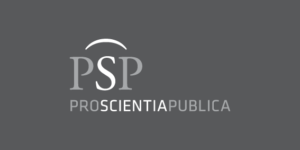Knowledge Management: Determine the Influencing Factors for Practicing at the Libraries in Bangladesh
DOI:
https://doi.org/10.15503/jecs2023.1.672.696Keywords:
Libraries, Knowledge Management, Critical success factors, KM practice, Bangladesh.Abstract
Aim. The main objective of this research is to know the influencing factors for KM practices in the library field of Bangladesh from the user's point of view. Therefore, the study examines the elements influencing Knowledge Management (KM) practice in Bangladeshi university libraries.
Methods. Present research used a quantitative approach, by adopting printed survey questionnaire for data collection from the users of the University of Dhaka (DU) and the University of Rajshahi (RU) in Bangladesh. Statistical software IBM®-SPSS® was used for data analysis, and the "partial least squares" (PLS) method was used to test the proposed hypothesis.
Results. The findings revealed that KM familiarity and perceptions in gender and current study level varied across users. This study found that all the proposed hypotheses are supported, i.e., the service quality and critical success factors are the most influencing factors for practicing KM in the DU and RU library.
Conclusions. The findings provide valuable insights regarding awareness about KM practices and assist university authorities in formulating relevant policies and taking necessary actions for KM practices in libraries.
Originality. The present research is one of the first research in Bangladesh that identified the influencing factors of KM from the user’s point of view.
Downloads
References
Ahmad, K. (2017). The perspective of library and information science (LIS) professionals toward knowledge management in university libraries. Journal of Information and Knowledge Management, 16(2), Article 1750015. https://doi.org/10.1142/S0219649217500150.
Alnakhli, H. Q. (2019). Better, busier, or stressed out? Exploring social media induced [Doctoral dissertation, The University of Texas at Arlington].
Bolisani, E., & Bratianu, C. (2018). The elusive definition of knowledge. In E. Bolisani, C. Bratinau (Eds.), Emergent Knowledge Strategies: Strategic Thinking in Knowledge Management (pp. 1-22). Springer. https://doi.org/10.1007/978-3-319-60657-6.
Chin, W. W. (1998). The partial least squares approach to structural equation modeling. In G. A. Marcoulides (Ed.), Modern methods for business research (pp. 295–336). Lawrence Erlbaum Associates Publishers.
Chin, W. W. (2010). How to write up and report PLS Analyses. In V. Esposito Vinzi, W. W. Chin, J. Henseler & H. Wang (Eds.), Handbook of Partial Least Squares: Concepts, methods and applications (pp. 655-690). Springer. https://doi.org/10.1007/978-3-540-32827-8_29.
Fornell, C., & Larcker, D. F. (1981). Evaluating structural equation models with unobservable variables and measurement error. Journal of Marketing Research, 18(1), 39-50. https://doi.org/10.2307/3151312.
Hair, J. F., Black, W. C., Babin, B. J., & Anderson, R. E. (2010). Multivariate data analysis (7th ed.). New York.
Hair, J. F., Hult, G. T. M., Ringle, C., & Sarstedt, M. (2022). A primer on partial least squares structural equation modeling (PLS-SEM) (3rd ed.). Thousand Oaks: Sage.
Hair, J. F., Ringle, C. M., & Sarstedt, M. (2011). PLS-SEM: Indeed a silver bullet. Journal of Marketing Theory and Practice, 19(2), 139-152. https://doi.org/10.2753/MTP1069-6679190202.
Henseler, J., Ringle, C. M., & Sinkovics, R. R. (2009). The use of partial least squares path modeling in international marketing. In R. R. Sinkovic & P. N. Ghuari (Eds.), New Challenges to International Marketing (Advances in International Marketing) (Vol. 20). Emerald Publishing Limited. https://doi.org/10.1108/S1474-7979(2009)0000020014.
Hoq, K. M. G., & Akter, R. (2012). Knowledge management in universities: Role of knowledge workers. Bangladesh Journal of Library and Information Science, 2(1), 92-102. https://doi.org/10.3329/bjlis.v2i1.12925.
Hu, L.-t., & Bentler, P. M. (1999). Cutoff criteria for fit indexes in covariance structure analysis: Conventional criteria versus new alternatives. Structural Equation Modeling. A Multidisciplinary Journal, 6(1), 1-55. https://doi.org/10.1080/10705519909540118.
Islam, M. A., Agarwal, N. K. & Ikeda, M. (2014). Library adoption of knowledge management using web 2.0: A new paradigm for libraries. International Federation of Library Associations and Institutions, 40(4), 317-330.
Islam, M. A., Agarwal, N. K., & Ikeda, M. (2015a). Conceptualizing value co-creation for service innovation in academic libraries. Business Information Review, 32(1), 45-52. https://doi.org/10.1177/0266382115573155.
Islam, M. A., Agarwal, N. K. & Ikeda, M. (2015b). Knowledge management for service innovation in academic libraries: A qualitative study. Library Management, 36(1/2), 40-57.
Islam, N., Islam, S. & Razzak, A. (2020). Problems of knowledge management practices in libraries and information centres of Bangladesh. International Federation of Library Associations and Institutions, 46(1) 34-51. https://doi.org/10.1177/0340035219894359.
Islam, S., Siddike, A. K., Nowrin S., & Naznin, S. (2015). Usage and applications of knowledge management for improving library and information service in Bangladesh. Journal of Information & Knowledge Management, 14(3), 50-52. https://doi.org/10.1142/S0219649215500264.
James, M. M., & John, N. (2018). Students' regarding the choice of library as their preferred learning space in a selected college of nursing in New Delhi. International Journal of Nursing & Midwifery Research, 5(4), 31-35. https://doi.org/10.24321/2455.9318.201844.
Kidwell, J. J., Linde, K. M. V., & Johnson, S. L. (2000). Applying corporate knowledge management practices in higher education. Educause Quarterly, 23(4), 28-33.
Koloniari, M., Vraimaki, E., Fassoulis, K., Zenelaj, I., & Kourniotis, X. S. (2015). A study of KM critical success factors in Greek academic libraries. International Journal on Integrated Information Management, 2. https://doi.org/10.15556/IJIIM.02.02.001.
Lambert, E. G., Hogan, N. L., & Cluse-Tolar, T. (2007). This job is killing me: The impact of job characteristics on correctional staff job stress. Applied Psychology in Criminal Justice, 3(2), 117-142.
Mahmood, Z., Iftikhar, W., Vistro, D. M., &Tariq, H. I. (2020). An examination of the use of knowledge management/ knowledge management systems in achieving and sustaining competitive advantage in higher education institutes: A case study of Asia Pacific University, Malaysia. International Journal of Scientific & Technology Research, 9(4), 3653-3658.
Memon, M. A., Ramayah, T., Cheah, J. H., Ting, H., Chuah, F., & Cham, T. H. (2021). PLS-SEM statistical programs: A review. Journal of Applied Structural Equation Modeling, 5(1), 1-14. https://doi.org/10.47263/JASEM.5(1)06.
Migdadi, M. (2009). Knowledge management enablers and outcomes in the small-and-medium sized enterprises. Industrial Management & Data Systems, 109(6), 840-858. https://doi.org/10.1108/02635570910968072.
Mitchell, M. L., Jolley, J. M., & O'Shea, R. P. (2013). Writing for psychology (4th ed.). Wadsworth.
Mostofa, S. M., & Islam, M. (2015). Challenges and opportunities of knowledge management in university library: A case study of Dhaka university library in Bangladesh. Journal of Information Science Theory and Practice, 3(4), 49-61. https://doi.org/10.1633/JISTaP.2015.3.4.4.
Musangi, P. S., Odero, D., & Kwanya, T. (2019). Critical success factors in library reengineering: A case of academic libraries in Kenya. Global Knowledge, Memory and Communication, 68(6/7). https://doi.org/10.1108/GKMC-12-2018-0099.
Muttaqi, F. (2020). Build and design knowledge management system for sharing material teacher. Journal of Physics: Conference Series, 1511, Article 012016. https://doi.org/10.1088/1742-6596/1511/1/012016.
Odor, H. (2018). Knowledge management. Journal of Business and Financial Affairs, 7(2). http://dx.doi.org/10.4172/2167-0234.1000335.
Omotayo, F. O. (2015). Knowledge management as an important tool in organizational management: A review of literature. Library Philosophy and Practice. http://digitalcommons.unl.edu/libphilprac/1238.
Pathak, R. K. (2014). Knowledge management in academic library: A need based approach. IOSR Journal of Humanities and Social Science, 19(1), 17-23. https://doi.org/10.9790/0837-19171723.
Rijlaarsdam, R. (2007). The interaction effect of source and motives on fairness perceptions in the context of revenue management in the airline industry [Master thesis, Unverisiteit Maastricht].
Sarawanawong, J., Tuamsuk, K., Vongprasert, C., & Khiewyoo, J. (2009). Development of a Strategic Knowledge Management Model for Thai Universities. Asia-Pacific Conference on Library and Information Education & Practice, 288-297. http://www.slis.tsukuba.ac.jp/a-liep2009/proceedings/Papers/a33.pdf.
Shropshire, S., Semenza, J. L., & Koury, R. (2020). Knowledge management in practice in academic libraries. IFLA Journal, 46(1), 25-33.
Siddike, M. A. K., & Islam, M. S. (2011). Exploring the competencies of information professionals for knowledge management in the information institutions of Bangladesh, The International Information & Library Review, 43(3), 130-136. https://doi.org/10.1016/j.iilr.2011.07.001.
Siddike, M. A. K., & Munshi, M. N. (2012). Perceptions of information professionals about knowledge management in the information institutions of Bangladesh: An exploratory study. Library Philosophy and Practice. http://digitalcommons.unl. edu/libphilprac/783/.
Sinclair, N. (2006). Stealth KM: Winning knowledge management strategies for the public sector. Butterworth-Heinemann.
Sultana, N., & Mostofa, S. M. (2018). Knowledge management initiative: A case study of the national library of Bangladesh. Journal of Information Science Theory and Practice, 6(1), 6-17. http://dx.doi.org/10.1633/JISTaP.2018.6.1.1.
Verma, R., & Jayasimha, K. R. (2014). Service delivery innovation architecture: An empirical study of antecedents and outcomes. IIMB Management Review, 26(2), 105-121. https://doi.org/10.1016/j.iimb.2014.03.002.
Wetzels, M., Odekerken-Schröder, G., & Van Oppen, C. (2009). Using PLS path modeling for assessing hierarchical construct models: Guidelines and empirical illustration. MIS Quarterly, 33(1), 177-195. https://doi.org/10.2307/20650284.
Williams, A. M., Giuse N. B., Koonce, T. Y., Kou, Q., & Giuse, D. A. (2004). Using knowledge management practices to develop a state-of-the-art digital library. Studies in Health Technology and Informatics, 107(1), 99-103. https://pubmed.ncbi.nlm.nih.gov/15360783/.
Zimmer, J., & Madeja, M. (2019). Operational knowledge management in a manufacturing enterprise in the High-Tech Sector: Case study. Journal of Organizational Knowledge Management, (2019), Article 458202. https://ibimapublishing.com/articles/JOKM/2019/458202/.
Downloads
Published
Issue
Section
License
Copyright (c) 2023 Mostofa Mamun, Roslina Othman, Zahidah Zulkifli

This work is licensed under a Creative Commons Attribution 4.0 International License.
CC-BY
Authors retain copyright and grant the journal right of first publication with the work simultaneously licensed under a Creative Commons Attribution License that allows others to share the work with an acknowledgement of the work's authorship and initial publication in this journal. All authors agree for publishing their email adresses, affiliations and short bio statements with their articles during the submission process.


